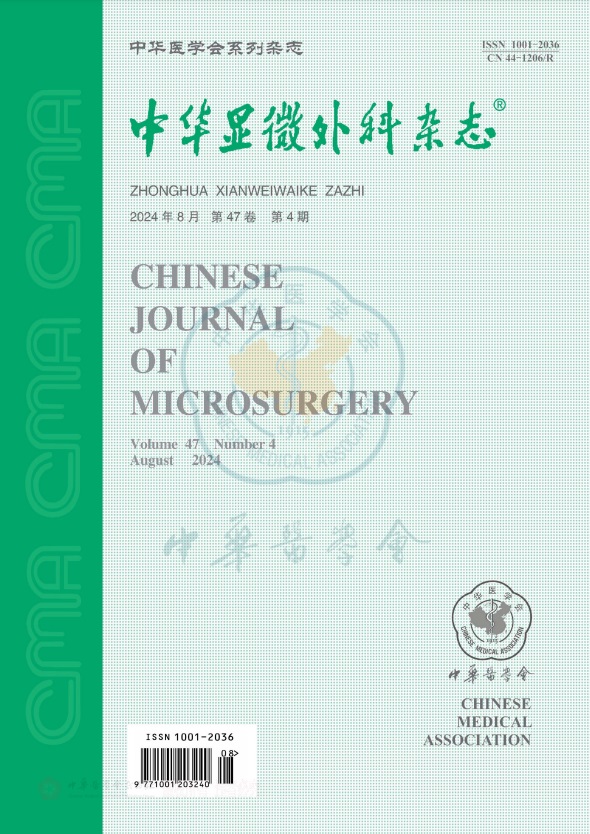穿支皮瓣术后标记系统的设计与临床应用
引用次数: 0
摘要
目的探讨基于穿支皮瓣的术后标记系统的设计及其临床应用。方法根据穿支皮瓣的基本解剖和血供特点,在术后皮瓣表面和受区标记观察点,以穿支为基础,采用手持式多普勒(HHD)和钟面测量法判断皮瓣血流变化。2015年11月至2017年11月,前瞻性地进行了一项对照研究,评估了单纯传统皮瓣监测组(n=100)和传统皮瓣监测联合术后标志系统监测组(n=100)的血管危象发生率、准确率、再手术率和皮瓣存活率。结果传统皮瓣监护组和联合组血管危象多集中在术后48 h。发病率无显著差异,两组血管危象的阳性率和阴性率(P>0.05)。传统皮瓣监测组的再手术率(87.5%)高于联合组(27.8%)(P<0.01)。联合组皮瓣的存活率(99%)高于传统falp监测组(90%)(P<0.05)有效引导医护人员观察皮瓣的血供,及时发现和判断血管危象,操作简单易行,不增加患者的创伤和医疗费用,也不需要额外的设备。关键词:穿孔器皮瓣;术后标记;手持式多普勒超声;血管危象本文章由计算机程序翻译,如有差异,请以英文原文为准。
Design and clinical application of postoperative marker system of perforator flap
Objective
To investigate the design of the postoperatively marker system based on the perforator flap and its clinical application.
Methods
According to the basic anatomy and blood supply characteristics of perforator flap, the observation points were marked on the flap surface and recipient area postoperatively, and judge flap blood flow changes with hand-held Doppler(HHD) and clock-face measurement based on perforators. From November, 2015 to November, 2017, prospectively conducted a control study evaluating the incidence of vascular crisis, accuracy rate, reoperation rate and survival rate of flaps between simple traditional flap monitoring group (n=100) and traditional flap monitoring combine with postoperatively marker system monitoring group (n=100).
Results
Vascular crisis was mostly concentrated with in 48 h postoperative in traditional flap monitoring group and combined group. There was no significant difference in the incidence, positive rate and negative rate of vascular crisis in the two groups (P>0.05). The reoperation rate in the traditional flap monitoring group (87.5%) was higher than the combined group (27.8%)(P<0.01). The survival rate of flap of combined group (99%) was higher than the traditional falp monitoring group (90%) (P<0.05).
Conclusion
The postoperatively marker system of perforator flap can effectively guide the medical staff to observe the blood supply of the flap, detect and judge the vascular crisis in time, and It is simple and easy to do without increasing the patient’s trauma and medical expenses as well as no additional equipments.
Key words:
Perforator flap; Postoperatively marker; Hand-held Doppler ultrasound; Vascular crisis
求助全文
通过发布文献求助,成功后即可免费获取论文全文。
去求助
来源期刊
CiteScore
0.50
自引率
0.00%
发文量
6448
期刊介绍:
Chinese Journal of Microsurgery was established in 1978, the predecessor of which is Microsurgery. Chinese Journal of Microsurgery is now indexed by WPRIM, CNKI, Wanfang Data, CSCD, etc. The impact factor of the journal is 1.731 in 2017, ranking the third among all journal of comprehensive surgery.
The journal covers clinical and basic studies in field of microsurgery. Articles with clinical interest and implications will be given preference.

 求助内容:
求助内容: 应助结果提醒方式:
应助结果提醒方式:


